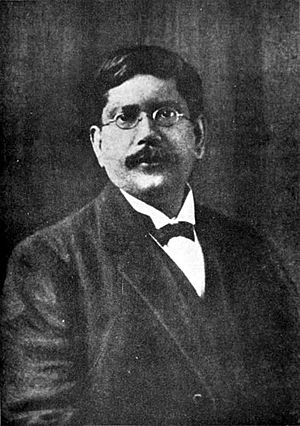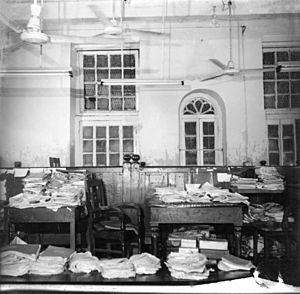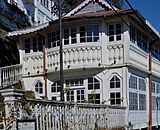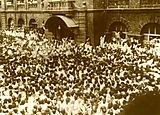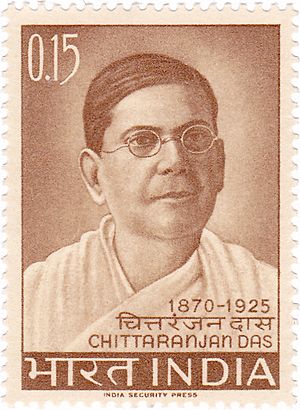Chittaranjan Das facts for kids
Quick facts for kids
Chittaranjan Das
|
|
|---|---|
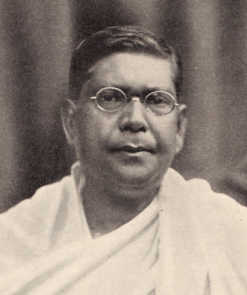 |
|
| Born | 5 November 1870 |
| Died | 16 June 1925 (aged 55) |
| Other names | Deshbandhu |
| Alma mater | Middle Temple |
| Occupation | Freedom fighter, politician, lawyer, poet, author |
| Political party |
|
| Movement | Anushilan Samiti Indian Independence movement |
| Spouse(s) | Basanti Devi |
| Children | 3 |
Chittaranjan Das (born November 5, 1870 – died June 16, 1925) was a very important leader in India's fight for freedom. People often called him Deshbandhu which means 'Friend of the Nation'. He was a lawyer, a politician, and a poet. He helped start the Swaraj Party in Bengal when India was ruled by the British. His name is also known as C. R. Das.
Contents
Early Life and Family
Chittaranjan Das was born on November 5, 1870, in a village called Telirbagh. This village is in Bikrampur, which is now part of Bangladesh. His family was well-known.
His father, Bhuban Mohan Das, was a lawyer and a journalist. Chittaranjan Das married Basanti Devi (1880–1974). They had three children: Aparna, Chiraranjan, and Kalyani.
Education and Friends
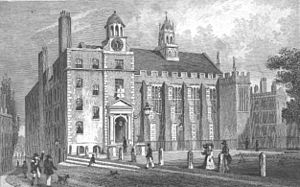
Chittaranjan Das came from a family of lawyers. He went to London to study law at a place called Middle Temple. He studied there from 1890 to 1894.
While in London, he became friends with other important Indian leaders. These friends included Sri Aurobindo Ghosh, Atul Prasad Sen, and Sarojini Naidu. Together, they supported Dadabhai Naoroji in the British Parliament.
Career and Politics
Law Career
Chittaranjan Das was a very skilled lawyer. In 1909, he successfully defended Aurobindo Ghosh in a famous case called the Alipore bomb case. Aurobindo Ghosh later said that Das worked so hard to save him that it affected his health.
Political Work
Chittaranjan Das was a key leader in the Indian Independence Movement. He was involved with a group called Anushilan Samiti. This group aimed to inspire young people to fight for India's freedom.
He played a big part in the Non-Cooperation Movement from 1919 to 1922. This movement was a peaceful protest against British rule. He encouraged people to stop using British-made goods. He even burned his own expensive European clothes and started wearing simple Indian-made Khadi clothes.
He started a newspaper called Forward, which later changed its name to Liberty. These papers supported the movements against British rule. When the Calcutta Municipal Corporation was formed, he became its first mayor.
Das believed in achieving independence through peaceful methods. He also strongly supported unity between Hindus and Muslims. He wanted people to work together and live in peace. He also promoted national education for all Indians.
He was the president of the Indian National Congress. Later, he started a new political party called the Congress-Khilafat Swaraj Party. He founded this party with other leaders like Motilal Nehru. This party aimed to enter the British councils to fight for India's freedom from within.
Poet and Writer
Chittaranjan Das was also a talented Bengali poet. He published collections of poems like "Malancha" and "Mala". In 1913, he published "Sagar Sangeet" (The Songs of the Sea).
He also started a monthly magazine called Narayana. Many famous writers contributed their articles to this magazine.
Death and Legacy
Chittaranjan Das worked very hard for India's freedom. In 1925, his health became weak because of all his efforts. He went to Darjeeling to rest. Mahatma Gandhi visited him there. Chittaranjan Das passed away on June 16, 1925.
His Impact
Chittaranjan Das left a lasting mark on India. Many places and institutions are named after him:
- The Chittaranjan National Cancer Institute in Kolkata started as a hospital in 1950. A few years before he died, Chittaranjan Das gave his house and land to the nation. He wanted it to be used to help women.
- Chittaranjan Avenue is a main road in Kolkata.
- Chittaranjan, a town in West Bengal, is named after him.
- The Chittaranjan Locomotive Works, a large factory that makes train engines, is also named after him.
- Chittaranjan College in Kolkata is a government college.
- Chittaranjan Park, a neighborhood in South Delhi, is named in his honor.


